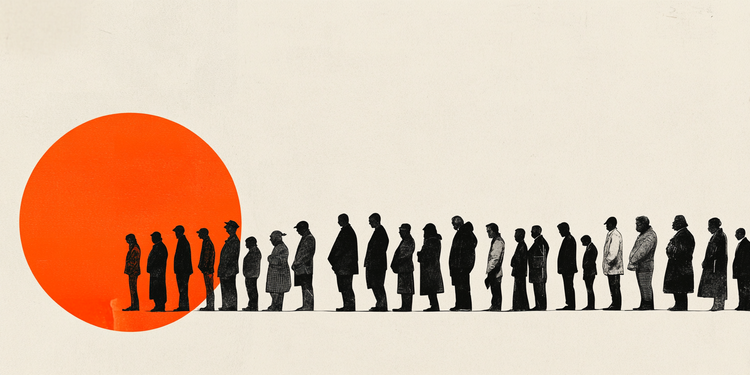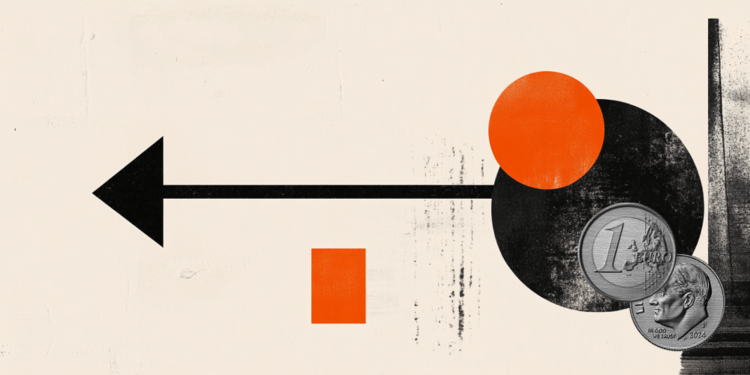- US Nonfarm Payrolls are set to increase by 170K in January after reporting 256K in December.
- The United States Bureau of Labor Statistics will publish the jobs data on Friday at 13:30 GMT.
- US labor data could offer fresh direction on the Fed interest rates and the US Dollar.
The United States (US) Bureau of Labor Statistics (BLS) will publish the all-important Nonfarm Payrolls (NFP) data for January on Friday at 13:30 GMT.
Amid lingering inflationary concerns under Donald Trump’s presidency, the January jobs report will be closely scrutinized to gauge the US Federal Reserve’s (Fed) interest rate outlook and the US Dollar (USD) performance in the near term.
Trump’s tariff war is seen as inflationary, calling for higher rates.
What to expect from the next Nonfarm Payrolls report?
Economists expect the Nonfarm Payrolls to increase by 170,000 jobs in January, following a 256,000 job gain in December. The Unemployment Rate (UE) is likely to stay at 4.1% in the same period.
Meanwhile, Average Hourly Earnings (AHE), a closely-watched measure of wage inflation, are expected to rise by 3.8% year-over-year (YoY) in January, compared with December’s 3.9% growth.
Following the January policy meeting, the Fed held the benchmark policy rate in the 4.25%-4.50% target range but altered the language in the policy statement to a slightly hawkish tone. The US central bank removed the earlier statement saying that inflation “has made progress” towards its 2% inflation goal while noting only the pace of price increases “remains elevated.”
Fed Chairman Jerome Powell, in his post-policy press conference, stated that the Fed wants to see further progress on inflation and could see a pathway for that, adding, “we don’t need to be in a hurry to make any adjustments.”
Despite the hawkish hold, markets continue expecting 46.3 basis points (bps) of Fed rate cuts by December, according to LSEG data, with a quarter-point reduction fully priced for July. Therefore, the January jobs data hold the key to affirming the strength of the US labor market, which will likely have a strong bearing on the Fed rate cut expectations for this year.
Previewing the January employment situation report, TD Securities analysts said: “Payrolls are set to lose momentum at the start of 2025, with temporary shocks helping to keep the headline gain under the 200K mark.”
“The UE rate likely stayed unchanged at 4.1%. The BLS will also unveil material revisions for payrolls and household employment data,” they added.
How will US January Nonfarm Payrolls affect EUR/USD?
The US economic data releases are back in focus as trade war fears take a back seat for now, reflective of the ongoing decline in the US Dollar due to its reduced appeal as a safe-haven asset.
Earlier in the week, the BLS reported that the JOLTS Job Openings dropped to 7.6 million in December, down nearly half a million from November’s 8.1 million. The Automatic Data Processing (ADP) announced on Wednesday that employment in the US private sector grew by 183,000 jobs last month, more than the estimated 150,000 and December’s 176,000 jobs creation.
The mixed US employment data failed to offer any comfort to the Greenback heading into Friday’s NFP release.
If the headline NFP figure shows a payroll growth below 150,000, the US Dollar downtrend could gain traction with the initial reaction to the data. Disappointing headline NFP print could revive dovish Fed expectations. In such a scenario, EUR/USD could swing back higher to the 1.0500 neighborhood.
On the other hand, an upside surprise to the NFP and wage inflation data could affirm the Fed’s hawkish tone, fuelling a fresh recovery in the USD while driving the EUR/USD pair back toward 1.0250.
Dhwani Mehta, Asian Session Lead Analyst at FXStreet, offers a brief technical outlook for EUR/USD:
“The EUR/USD turnaround from three-week lows of 1.0210 appears capped by the 50-day Simple Moving Averages (SMA) at 1.0408 in the countdown to the NFP showdown. Meanwhile, the 14-day Relative Strength Index (RSI) challenges the 50 level from above. These technical indicators suggest that the pair could resume its downside in the near term.”
“Buyers need a decisive break above the January 30 high of 1.0468 to target the 1.0500 key level. Acceptance above that level is critical to unleashing further recovery toward the static resistance near 1.0535. Conversely, if EUR/USD yields a sustained break of the 1.0300 mark, sellers will then aim for the three-week troughs just above 1.0200.”
Euro PRICE This week
The table below shows the percentage change of Euro (EUR) against listed major currencies this week. Euro was the strongest against the New Zealand Dollar.
| USD | EUR | GBP | JPY | CAD | AUD | NZD | CHF | |
|---|---|---|---|---|---|---|---|---|
| USD | 0.00% | -0.25% | -1.50% | -2.34% | -0.80% | -1.12% | -1.16% | |
| EUR | -0.01% | 0.15% | -0.21% | -1.07% | -0.35% | 0.16% | 0.15% | |
| GBP | 0.25% | -0.15% | -1.42% | -1.21% | -0.49% | 0.02% | -0.02% | |
| JPY | 1.50% | 0.21% | 1.42% | -0.87% | 0.85% | 1.29% | 0.98% | |
| CAD | 2.34% | 1.07% | 1.21% | 0.87% | 0.48% | 1.25% | 1.21% | |
| AUD | 0.80% | 0.35% | 0.49% | -0.85% | -0.48% | 0.51% | 0.49% | |
| NZD | 1.12% | -0.16% | -0.02% | -1.29% | -1.25% | -0.51% | -0.03% | |
| CHF | 1.16% | -0.15% | 0.02% | -0.98% | -1.21% | -0.49% | 0.03% |
The heat map shows percentage changes of major currencies against each other. The base currency is picked from the left column, while the quote currency is picked from the top row. For example, if you pick the Euro from the left column and move along the horizontal line to the US Dollar, the percentage change displayed in the box will represent EUR (base)/USD (quote).

























